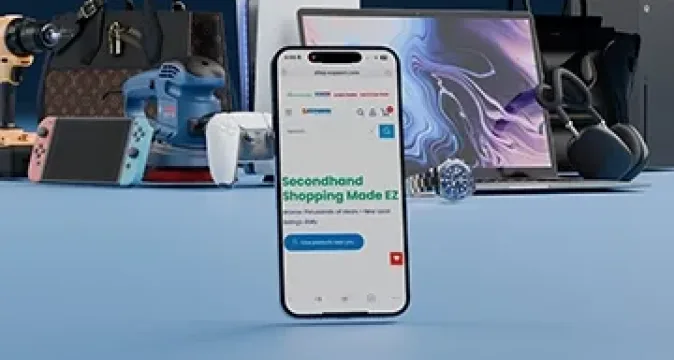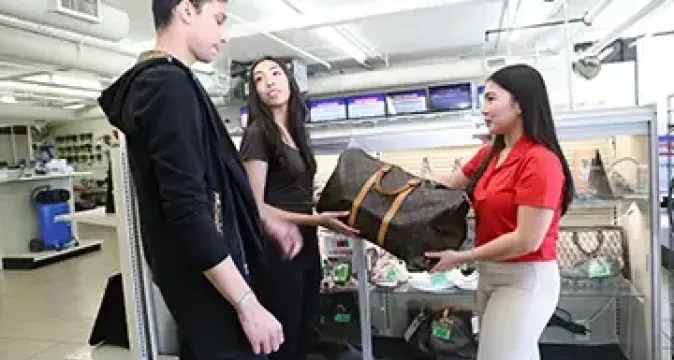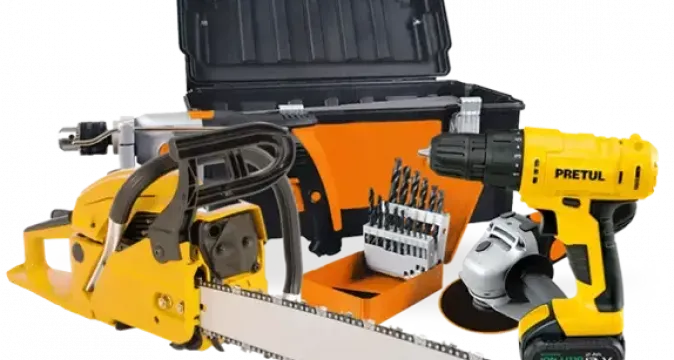
Have you ever been tempted by a seemingly incredible deal on a
designer handbag, only to discover it was a counterfeit? Don't worry;
you're not alone. The counterfeit market for designer goods is thriving,
making it increasingly challenging to distinguish between genuine and
fake items. In our latest post, we're here to equip you with the
knowledge and tools to spot fake designer items, particularly focusing
on the world of designer handbags, sunglasses, sneakers and gold.
We'll delve into the intricacies of what to look for in fake designer bags, sunglasses, sneakers and gold, exploring key elements such as brand logos, authenticity cards, and other telltale signs that can help you identify counterfeit items. Join us as we uncover the secrets of the counterfeit market and empower you to make informed decisions when it comes to investing in authentic designer goods.
THE RISE OF FAKE LUXURY
In today’s world of luxury goods, things are changing fast. From how luxury items get sold, to who is making them, to their resale. Some of these trends are great while others are detrimental to the luxury industry – like the rise in fake merchandise.
Simultaneously, many consumers are having a change of heart when it comes to these high-value products. The increased attention to sustainability and climate change has made consumers stop and think about their consumer habits. As a result, demand in second-hand markets, such as pawn shops, has skyrocketed.
According to Entrupy, “Even in luxury markets, the stigma of “used” is fading fast while second-hand sales of luxury items across all categories grew 65% from 2017 to 2021, a rate five times faster than the primary market”[i].
This has led more people to buy pre-owned items. This is both good and bad. On one hand, this feeds the circular economy; but on the other hand, it creates more vulnerabilities for fakes and frauds, AKA “knock-offs.”
Nevertheless, large retailers (and even pawn shops) are making huge progress in combatting the illicit trade, sale, and manufacturing of these products. Yet younger shoppers are still the ones primarily affected. This is due in part to the rise in social media platforms such as Instagram and TikTok that garner huge audiences for unsuspecting buyers. And since there will never be enough of these luxury goods to go around, many are unintentionally buying fakes.
So how do you know if the luxury goods you’re buying are authentic?
If not buying from the actual store itself, do you just take the
seller for their word? Are there any precautionary steps you should take
to make sure you’re not being ripped off?
From luxury handbags and sunglasses to sneakers and fur coats, EZPAWN will go over how to spot a fake in this article. Let’s jump in!
LUXURY HANDBAGS

There are many things a consumer needs to be aware of before purchasing a luxury handbag. Below are just a handful of quick considerations:
1. Inspect Material Quality
This can be a dead giveaway. What is the material? If it’s leather, it should feel and smell like leather.
The stitching is another area to inspect. Craftsmanship should be of the highest quality. If it’s not, then it could be a fake. So, look out for jagged, loose, or sloppy stitching.
Finally, check the pockets. Does the bag have the correct number of pockets? Are they all in the correct positioning of an authentic bag?
Authentic luxury handbags have high standards that are meticulously inspected. These bags go through lots of quality control so there’s little to no room for poor-quality material, stitching, or inaccurate placement of pockets. If you do find any glaring flaws, you may be dealing with a fake.
2. Color
Many counterfeiters work from digital images they try and replicate. Often these fake bags will be a slightly different color than the originals. So, make sure to examine them carefully.
3. Hardware
Give the hardware a close inspection. It should be very sturdy. Often fakes will be hollow because they are attempting to sell them for the most amount of profit by using the cheapest metal. The hardware shouldn’t chip or be chipped. This is another giveaway.
4. Logo
“The devil is in the details.” This saying couldn’t be truer for handbags and especially the logos on them. Go to the retail website to find the bag and match it with the one you are thinking of purchasing. Is the spelling correct? Is it the same font? Is it centered? Is it the same type of material?
Next check the inner logo. Is there a serial number? Are the numbers correct? Is it centered? Does it have a hologram?
All these things will help you identify if it’s authentic or not.
LUXURY SUNGLASSES

1. Nomenclature
Make sure to look for the brand name. For sunglasses like Maui JimTM, the name is placed on the right lens in the upper right-hand corner. Always verify the brand name is shown correctly by visiting the brand website.
Also look at the model number. This is usually located on the inside of the temple of the sunglasses. You can look this number up online to verify the authenticity.
2. Logo Consistency
Make sure the size, color, and font of the logo look consistent. Any error or variation could indicate the sunglasses are fake.
If there’s any obvious abnormality, this could mean the sunglasses are fake. For example, “MauiJim” instead of Maui JimTM.
3. Box
The sunglasses come in a branded box with a bar code. Almost always there’s a booklet or certificate of authenticity that should be inside the box too. Verify the item is the same as the description on the certificate of authenticity.
SNEAKERS

1. Check Source
Typically, this means comparing the sneakers you are thinking of buying to the official website. Look out for any glaring irregularities or deviations. And it doesn’t hurt to do your own research. Check to see if the sneakers you are going to buy are commonly faked. If so, be sure to read on to find out how to spot a fake.
2. Inside Tags
Tags are the most notorious for being wrong with phony sneakers. This is the fastest way to identify if the sneakers you are purchasing are real or fake. The tags are commonly placed on the inside tongue of the shoe with the UPC code. This number will be the same for every sneaker of the same size.
3. Smell Test
Yes, you read that correctly! If the sneakers are new and have not been worn, then a smelling test weeds out any fakes. Replica sneakers are usually made from cheaper materials and with that comes a drastically different scent. So, what should you look (smell) for? If the sneakers have a skunky smell, then they might be fake. Or if they smell toxic like cheap toys and/or materials, then they are also most likely fake. But keep in mind this is just one of many tests to identify the authenticity of the shoe.
4. Production Size
The price will often reflect the size of the production. If someone is selling an incredibly rare pair of sneakers for a suspiciously low price, then that’s a red flag. Do a little due diligence and research the release date, how many were originally made in production, and for what they were originally selling as well as the resale value of the shoe. If these factors don’t line up, you could be dealing with a fake sneaker. Use caution before moving forward with the purchase.
5. Check Above Potential Counterfeit Identifiers
As stated above in the handbags section, you should look, hold, and smell the sneakers for any discrepancies. This includes materials used, stitching quality, labels, and price. Then compare it to the official website of the product’s brand. Get as much information on the product as possible before purchasing. This will greatly enhance your chances of buying authentic sneakers while avoiding fake ones.
LUXURY GOLD

There are a series of tests you can perform to tell if you are dealing with fake gold. These tests are not foolproof, but they should greatly reduce the chances of buying fake gold.
1. Skin Test
This test can be done by holding a piece of gold tightly in your hands until they start to sweat. Then rub the gold on your hands or arm and look at the area you rubbed the gold on. Did it leave a mark? Fake gold will leave a black, green, or blue mark. Real gold will not react to sweat and therefore will not leave a mark. Please note that makeup might discolor your skin when it’s in contact with gold.
2. Float Test
Plain and simple, real gold sinks straight to the bottom while fake gold may float or hover right above the bottom. This test is only supplemental and should not be used as an absolute indication of authenticity.
Note that imitation gold made from denser metals than water, like iron, will also sink to the bottom. So be wary of the types of metals you are experimenting with.
3. Jewelry Loupe Test
Jewelry loupes (pronounced "loops") are a particular type of magnifying glass. The jeweler's loupe is used to observe all identifying characteristics of a jewelry item, including the content stamp, defects, and scratches. Once you master how to use a loupe, it will become more and more valuable for evaluating jewelry. You must use a loupe 10X triplet (ten power). Any flaws that do not show up under 10X loupe magnification are considered non-existent for grading purposes.
4. Hallmark Test
Precious metals such as gold will carry a special mark that certifies their purity. At times, the manufacturer will also be marked on the jewelry. Karats or millesimal fineness are expressed as purity.
Karats (with a k), which are only used for gold, measure the parts per 24 karats. 24-karat gold is considered pure gold whereas 18k gold is only 75% gold because it’s 18/24 karats.
Millesimal fineness is the fineness of gold in units of parts per 1,000.
5. Magnet Test
This is one of the fastest and easiest tests (if you have a strong magnet). If the gold “sticks” or gets magnetized, then it’s not real gold as gold is not magnetic.
Metals such as palladium, zinc, copper, and silver are not magnetic, but nickel is. And white gold usually contains about 25 percent nickel – which might not pass the magnet test. Asking the jeweler/seller if a piece is white gold is something to keep in mind when shopping.
HOT TO SPOT A FAKE IN SUMMARY
There are many ways to spot fakes. By conducting a series of tests specifically for each item (handbags, sunglasses, sneakers, and gold) you can be more confident in your purchase of that item. However, these tests are not foolproof. The more expensive the original item, the harder it will be to tell if you are dealing with a fake or not. The best thing to do is run each of these tests, do your own research and get second or even third options on the item you are wanting to purchase. Pawn shop team members do a lot of vetting before selling any of their products. Team members have been trained and now have amazing technology to assist them in identifying authentic or fake merchandise so customers can better ensure they are buying the real thing! Visit EZPAWN today to shop our luxury products. You can trust what you find!
Endnote:


